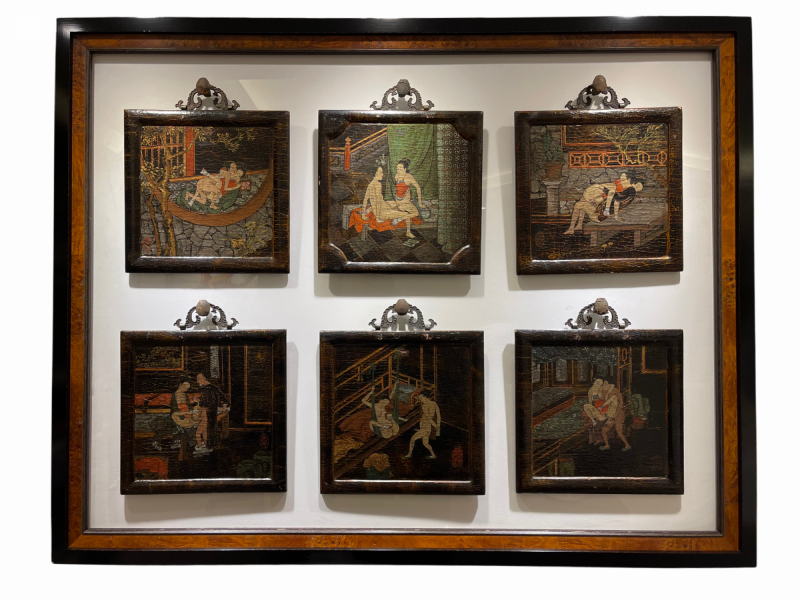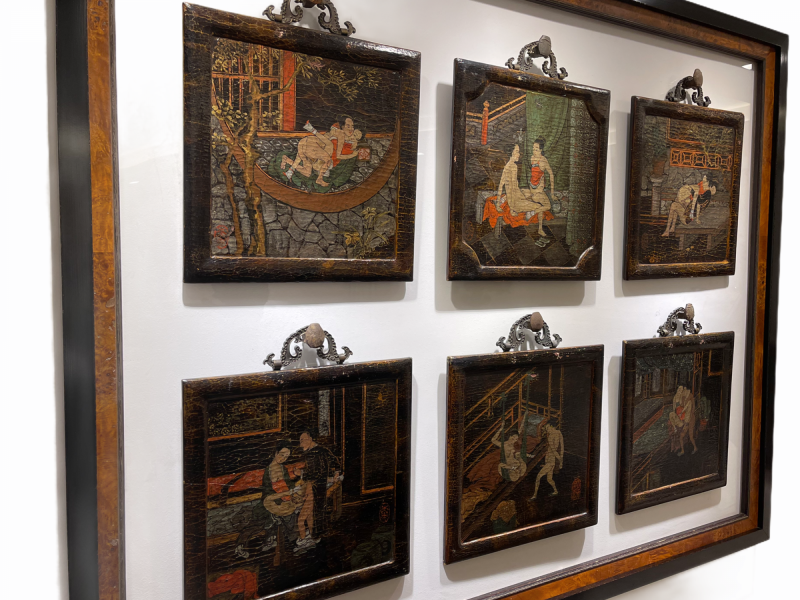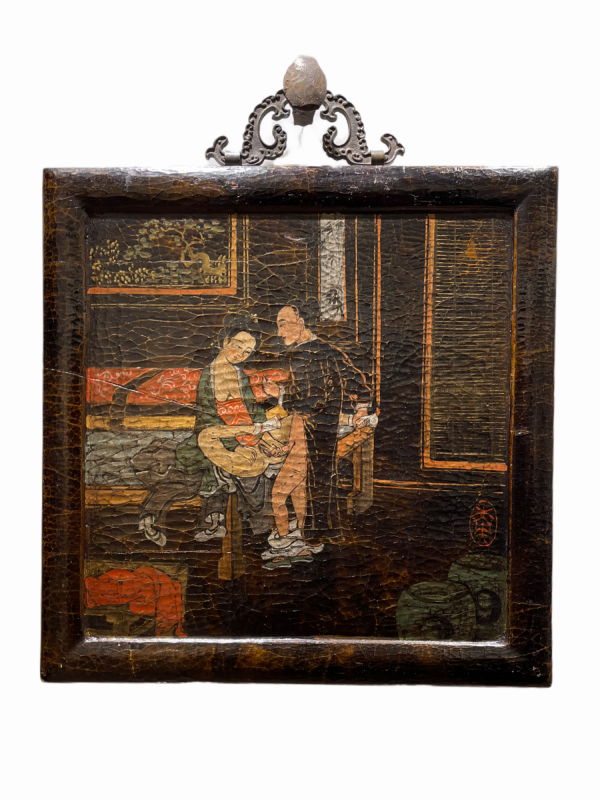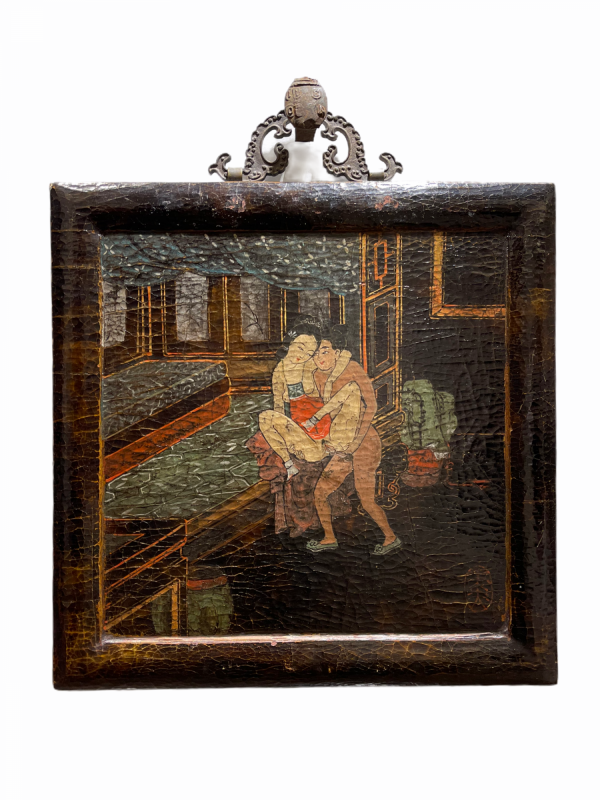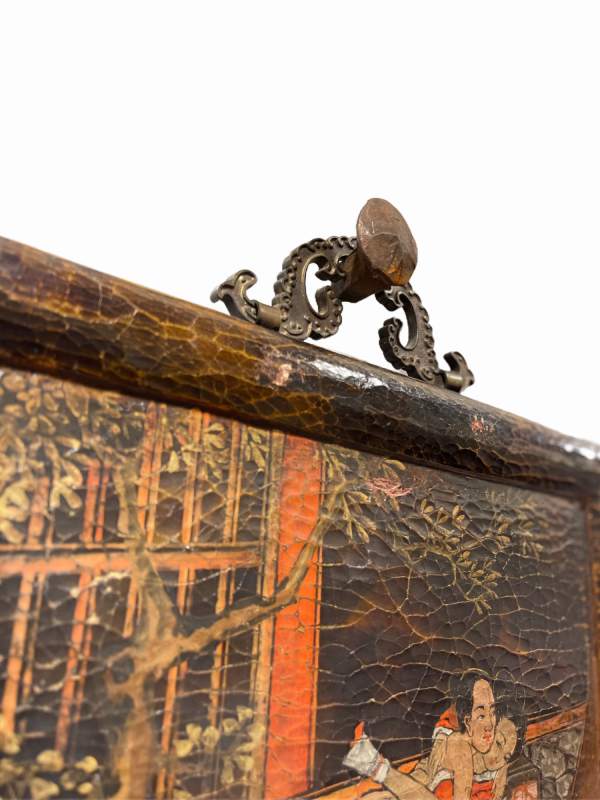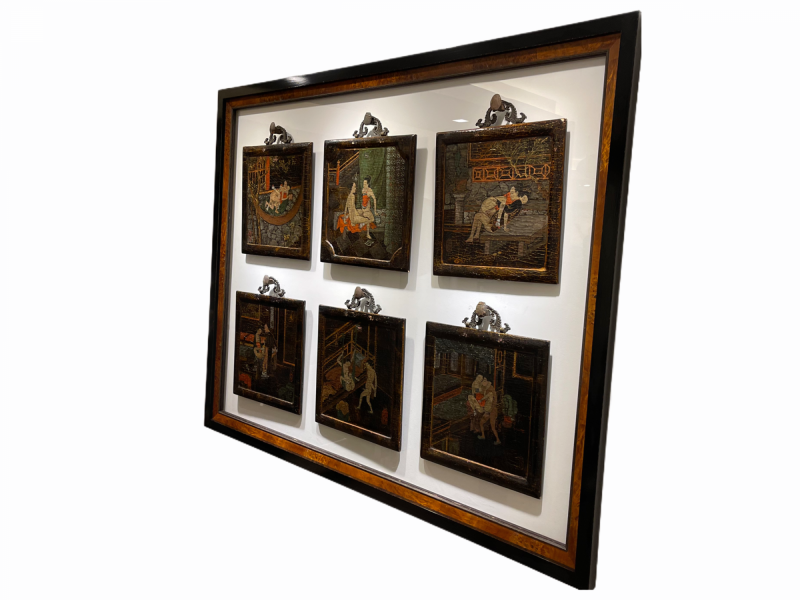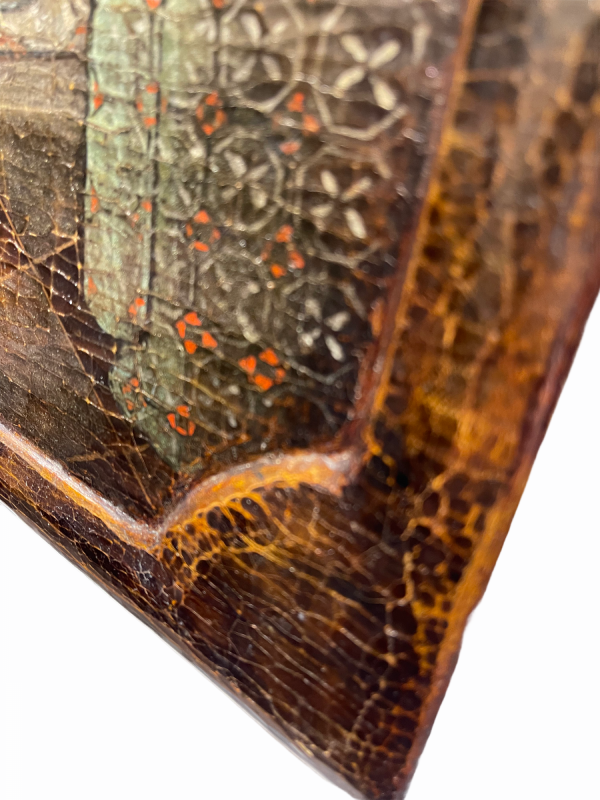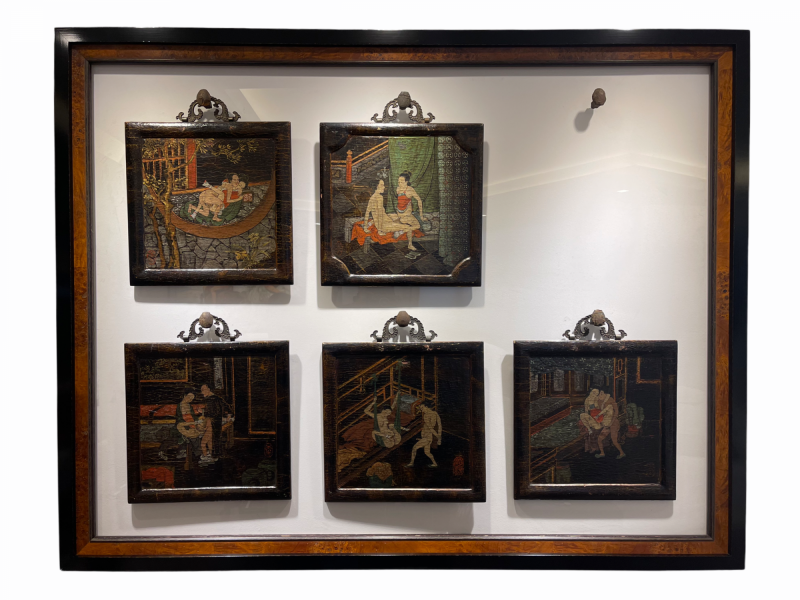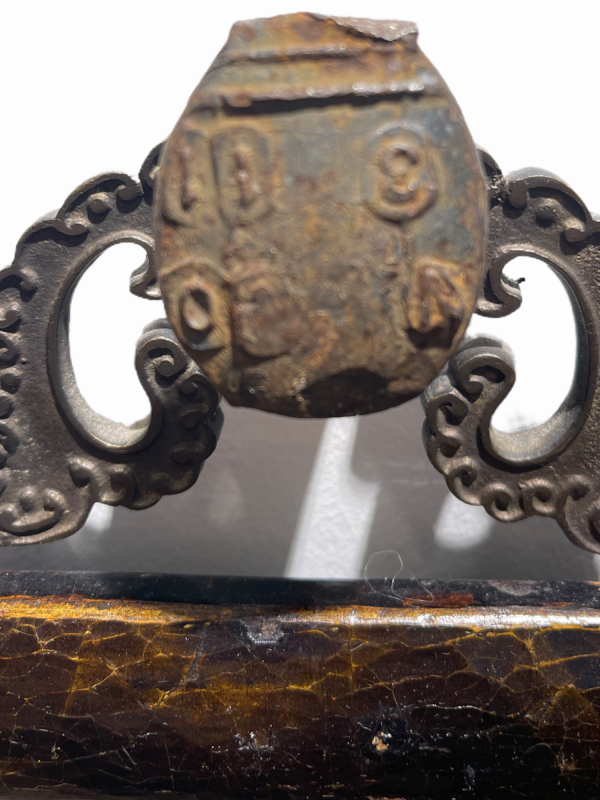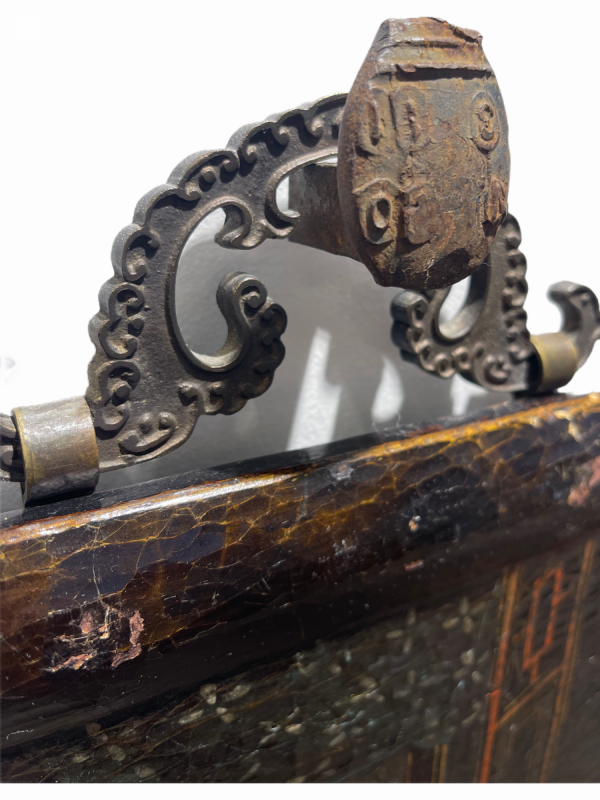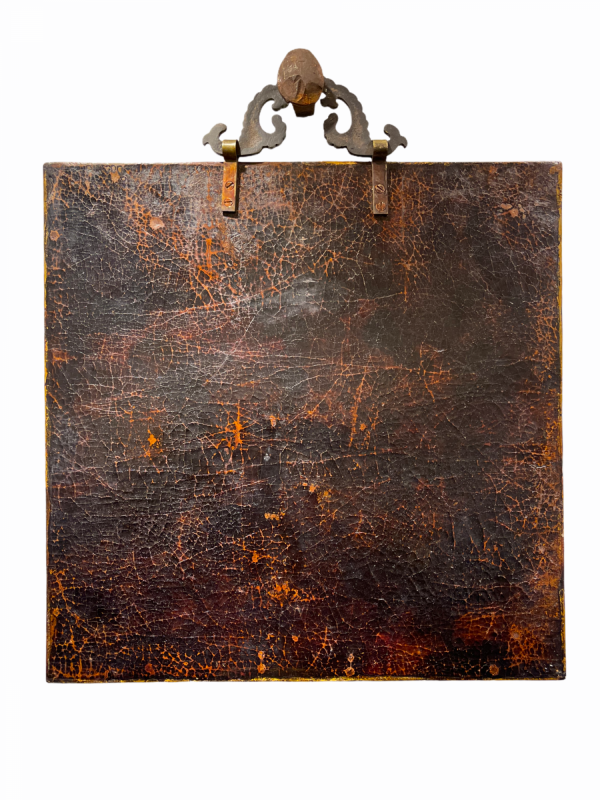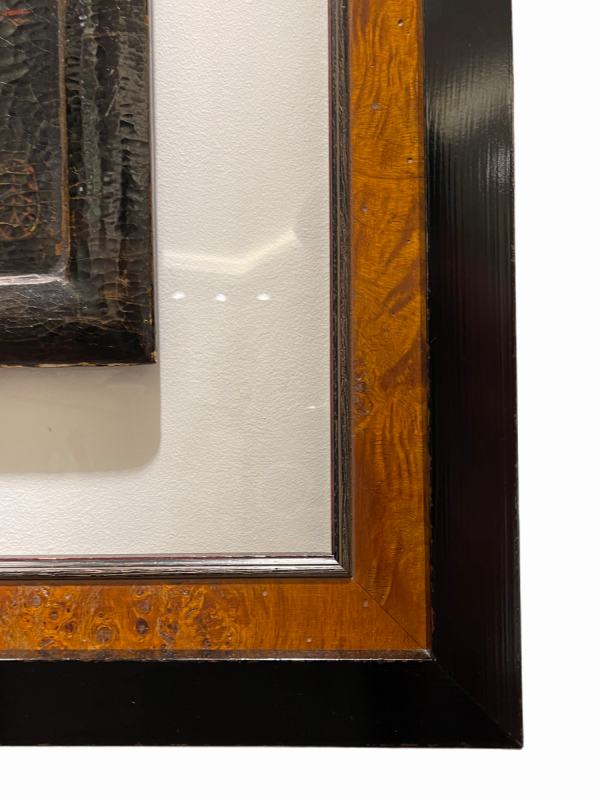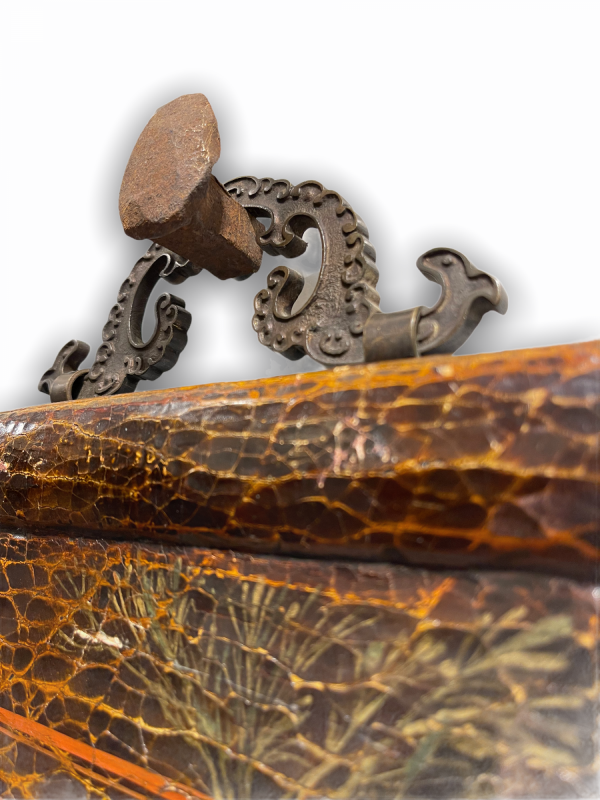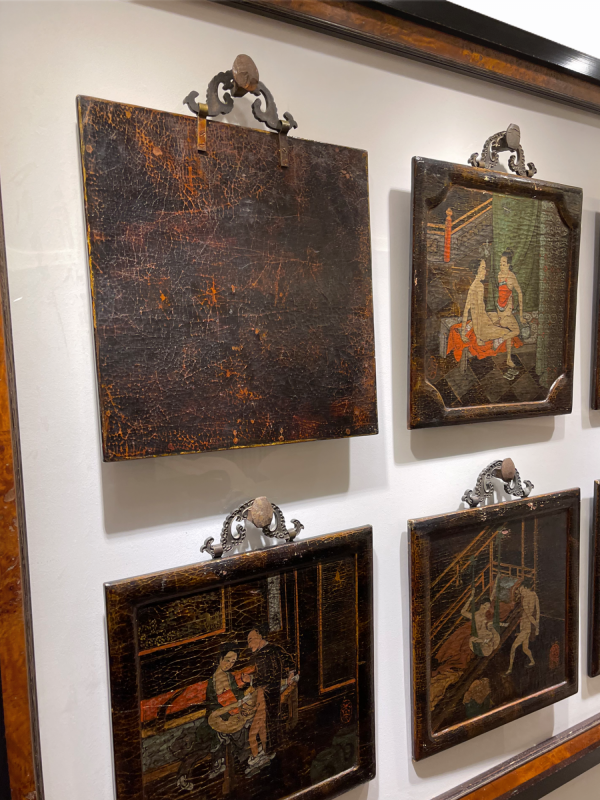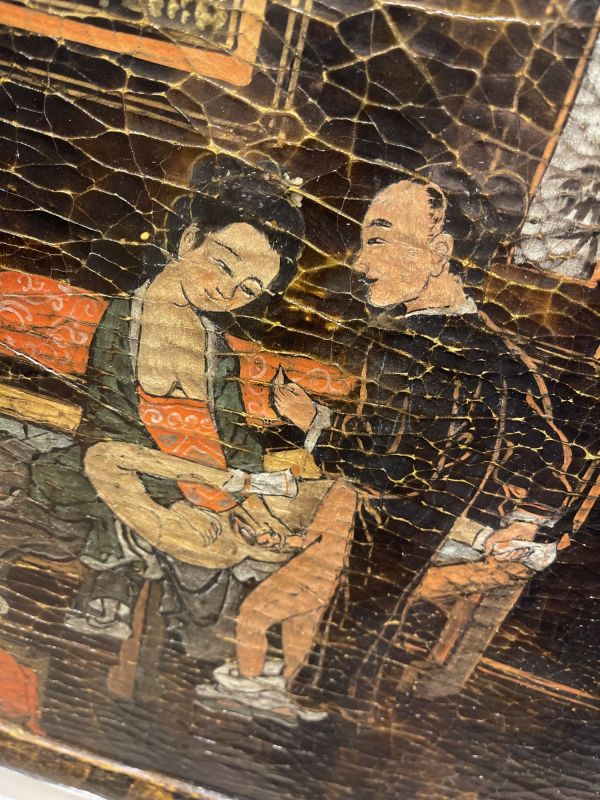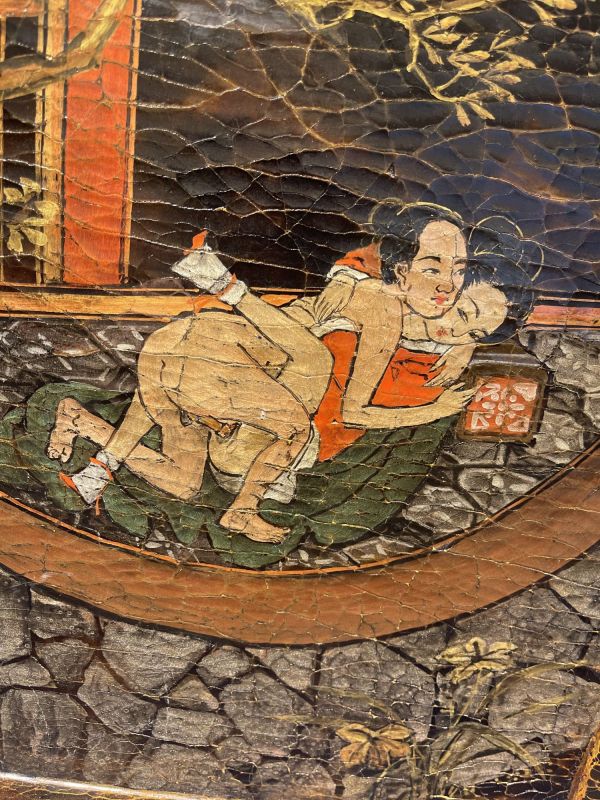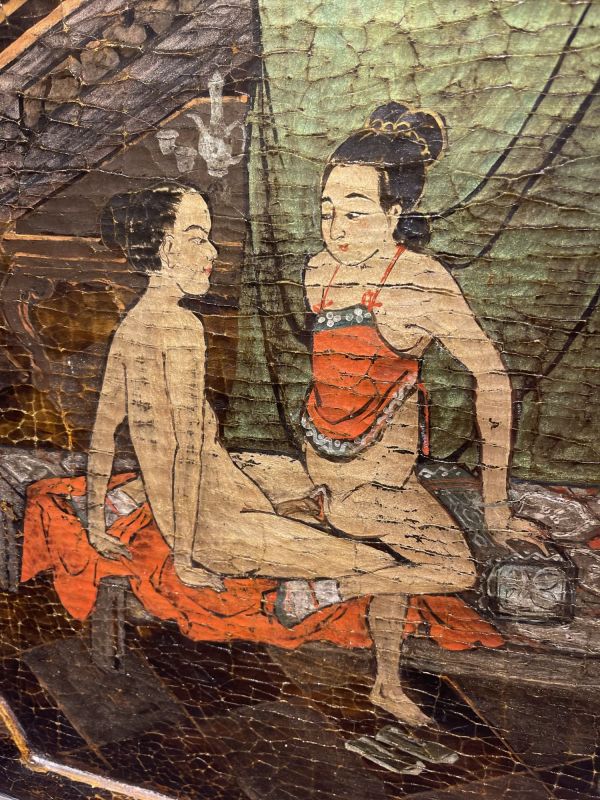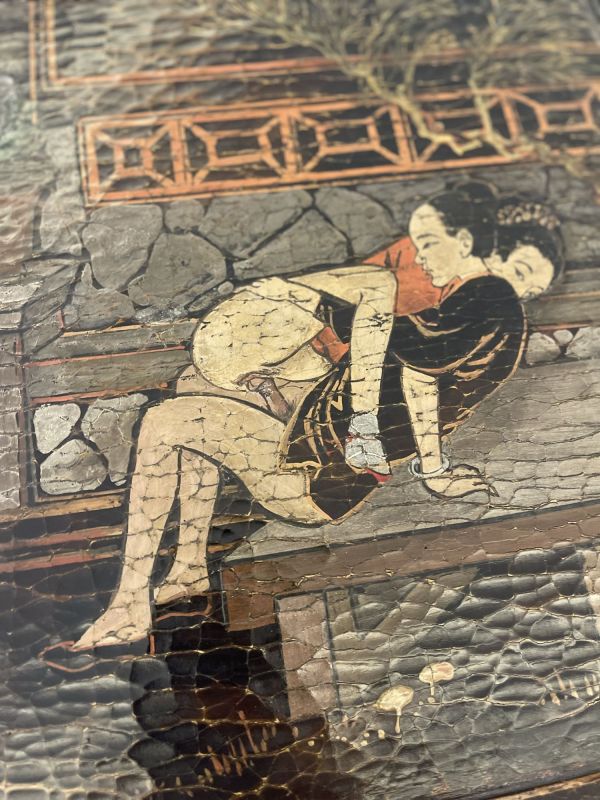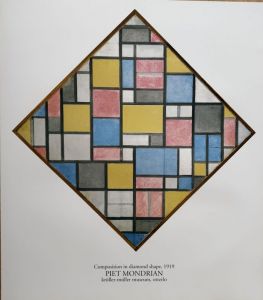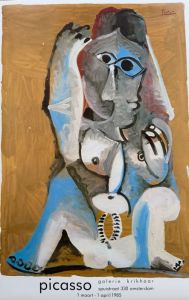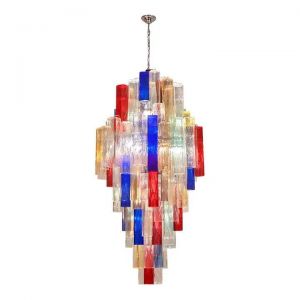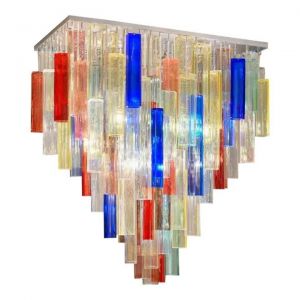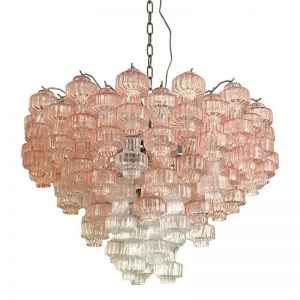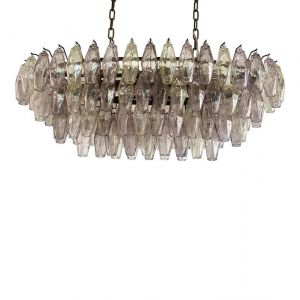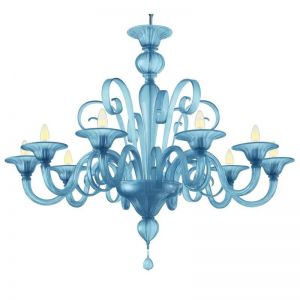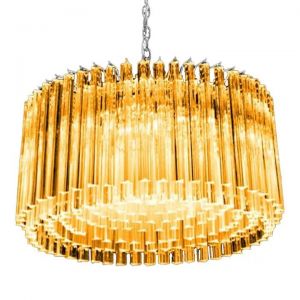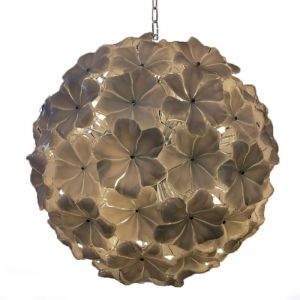Set of Six Japanese Ido Period Shunga (Erotica) Hanging Lacquered Wood Panels
$45,000.00
These magnificent Lacquered Wood panels have been mounted together on a lucite panel. Each panel has its original hanging handle. The panels are hanging on antique railroad pins that have been cut and attached to the lucite panel. It has been framed with a double molding, which is made up of a black lacquered wood molding and a walnut burl wood molding.
Shunga was painted by some of the best ukiyo-e artists of the day, including Kitagawa Utamaro and Katsushika Hokusai (Hokusai’s most famous shunga, which features some octopus-on-woman action, was the subject of a 1981 film titled ‘Edo Porn’). Shunga was in demand, and one commission from a wealthy buyer would reportedly keep an ukiyo-e artist eating for months.
One, ahem, standout element of shunga is the exaggerated genitalia. This flourish was not, in fact, ukiyo-e artists bragging about the size of their, uh, brushes, but rather an expression of the genitalia as a ‘second face’, one that, unlike the face presented to the public every day, represents one’s true primal desires – hence both the similarity in size and often unnatural physical proximity to the noggin’.
Another unique shunga element: both partners are usually fully (well, almost fully) clothed. Unlike in the West, where bare flesh was seen as simultaneously tantalising and taboo, men and women of Edo-era Japan saw each other in the nude regularly at mixed baths and the like. If anything, it was more appealing to see men and women in shunga clothed, as it helped to identify the characters’ walk of life and to emphasise the parts that were exposed (as if they needed any more emphasising).
Shunga was widely accepted in the Edo period, owned and displayed by both men and women. Reports from early foreign visitors to Japan describe visits to Japanese homes in which the man and wife of the house proudly show off their shunga collections to their horrified Western guests.
The de-shunganisation of Japan came in the Meiji period. Opening itself up to the Western world after centuries of isolation, the Japanese government sought to bring the country in line culturally and morally with the ‘civilised’ West, banning shunga (not to mention fun practices like public nudity and mixed-gender bathing). Police raids in the early 1900s led to the confiscation and destruction of thousands of pieces, and shunga, though no longer banned outright, has remained taboo since.
Ironically, it’s again Western influence that’s changing Japanese attitudes towards shunga – this time toward a positive re-evaluation. Many 20th century Western artists have cited the influence of shunga on their work (Picasso liked Hokusai’s aforementioned octopus-starrer so much he painted his own version), helping legitimise the form in the West while it was simultaneously being banned in Japan.
More recently, over the past decade there have been major exhibitions of shunga in Helsinki, Milan and Barcelona, culminating in the 2013 exhibition at the British Museum that serves as the basis for Tokyo’s, which ‘The Independent’ praised as being ‘the most explicit and brilliant pictures of pleasure ever produced’.
Quantity:
1
Period:
18th century (1700-1799)
Place of origin:
Japan
Style:
Antique
Dimensions (cm):
134,62H x 170,18W x
Dimensions (inch):
53H x 67W x
Creator / Artist:
Material:
Wood, Metal, Iron, Lacquered wood , Burl wood, Lacquered , Lucite , Painted wood
Condition:
Very good;
Inventory ID:
Asian art antique Japanese KamaSutra Set of Six Japanese Ido Period Shunga Erotica Hanging Lacquered Wood Panels
Payment options:
Credit card,
Debit card
Debit card
Shipping options:
International - YES
Shipping regions:
Worldwide
CURATED.ART

Latest items
Published in Furniture, Lighting, Decorative Objects and Fine Art categories
